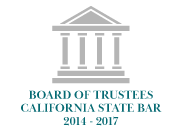Your home is likely one of the most valuable assets you own, if not the most valuable.
Calling it an asset can sound cold. A home is far more than an assortment of materials and possessions. It represents a place to live, gather, create life stories, and share memories.
However, in the eyes of the law, your home is a collection of several types of property along with their associated property rights. When the time comes to pass your home on at your death, legal definitions, rather than sentimental attachments or fond associations with the house, typically govern how the transfer occurs.
“Leaving my home to someone” can mean different things to different people—and to the law. The most effective way to help your gift be received as you envision it is to spell out the details in your will or trust. That process involves considering not only the property itself but also what is in it, what is attached to it, and what financial obligations are tied to it.
What “My Home” Means in Legal Terms
It’s common to use words and expressions in everyday conversation that carry a different meaning in legal contexts.
Telling a friend that you’re giving your old car to your nephew might suggest a simple handover of the keys, but legally it could require a transfer of title and registration, addressing any existing loan, and potentially payment of taxes. Taking care of a friend’s dog may imply feeding and walking it for the weekend. Depending on the situation and state law, however, agreeing to care for a dog may also mean taking on legal responsibility, such as being held liable if the dog bites someone.
Similarly, when we say “my home,” we usually mean the whole package: the house, the land it’s on (including the front and backyards), and even the furniture and belongings inside. In legal terms, however, each of those elements is distinct and has its own considerations for transfer, ownership, and inheritance.
So, while you may state in a will or trust that you’re leaving “my home” to someone, the law doesn’t automatically treat “home” as one indivisible object. Instead, it recognizes separate legal components that may or may not be included in your bequest, depending on the wording.
Generally, when you leave a house to someone in your estate plan, you’re giving them what the law calls real property. But what’s actually included in that term may not be obvious, which is why the wording in your will or trust matters. Being precise can help transfer exactly what you intend—no more, no less. Consider the following:
Obvious Inclusions When You Say “My Home”
The house and land. The physical structure (the house itself) and the land it sits on are typically transferred together as real property. For instance, a single-family home at a given address includes both the house and the surrounding land described in the deed.
Fixtures. Fixtures are items that are permanently attached to the home, such as built-in cabinets, ceiling fans, lighting fixtures, and HVAC systems. Fixtures are generally considered part of the property and are usually included when real property is conveyed, unless they’re explicitly excluded. For example, if you want to leave your antique chandelier (which is normally considered a fixture) to your niece, you would need to include language in your estate plan making it clear that the chandelier is excluded from the gift of the home to someone else.
Not-So-Obvious Inclusions in “My Home”
The house, the land, and everything permanently attached to the property are typically included when you refer to “my home” in your estate plan. However, the following types of items in the home may not be part of the transfer unless you specifically include them:
Personal property. Items such as furniture, rugs, artwork, collectibles, and portable appliances are generally not included without a specific provision in your estate plan to the contrary. The same goes for items stored in the attic, basement, or garage.
Appliances. Built-in items (such as an oven or cooktop that’s integrated into the cabinetry) are often considered fixtures, while freestanding ones (such as a refrigerator, washer, or dryer) are typically considered personal property and don’t automatically transfer unless specifically included.
Some people want all the personal property in the home to transfer with the home, while others would rather it go to someone else. For those who want to include it with the home, they may identify the gift in their estate plan as “the home and all its contents.” However, an all-contents clause isn’t always a foolproof solution for avoiding ambiguity. Courts often narrowly interpret phrases such as “all its contents” or “everything in the house” to mean only household goods inside the home, not items stored off-site.
Consider this scenario: Your will states you’re leaving “my home and all its contents” to your daughter. She reasonably assumes that this means the furniture, dishes, and artwork inside the house. However, you also keep valuable jewelry in a safe deposit box at the bank and a classic car in a storage unit across town. Because those items aren’t physically in the home, they may not be legally included in the “all contents” gift. This could mean that your daughter doesn’t inherit them, even if that was your intent.
If you don’t use an all-contents clause, another issue can arise. Many estate plans include a catchall provision that says something like “all remaining personal property goes to [a named person].” In practice, such wording means that anything not specifically mentioned elsewhere in your estate plan—such as furniture, household goods, or jewelry—will go to that individual. The challenge is that this person may not be the same one who inherits your home. If you assumed that the household belongings would automatically go with the house but your estate plan directs “all remaining personal property” to someone else, the result can be an unintended split: one person ends up with the house while another gets everything inside it.
The Fine Print
Private property rights are governed by contract law. However, even if you’ve lived in your home for decades, you may never have read all the fine print in your original purchase documents and deed explaining the exact rights and restrictions you received when you purchased the property. These provisions should be recognized and addressed in your estate plan so your loved one knows exactly what they’re getting (and not getting) and can plan accordingly.
Easements and restrictions. If your property is subject to certain types of easements or restrictions, your beneficiary will also inherit it with those limitations. For instance, a neighbor’s right to use a shared driveway or local or community rules prohibiting certain renovations can affect how the property is used.
Mineral and air rights. Mineral rights, such as ownership of oil, gas, gravel, or other resources below the surface, and air rights (including the ability to control the airspace above the property) are separate development rights. These interests may have already been sold or leased by you or a prior owner, and if they haven’t been, they may still be separate from the land and may not automatically transfer with the home unless you specifically include them in your estate plan or deed.
Shared community areas. For condominiums or townhouses, the beneficiary typically inherits the individual unit itself, while the land or common areas, such as pools, hallways, or shared landscaping, remain under the condominium association’s control.
Existing debts or liens. The home will generally transfer to a beneficiary subject to existing debts or liens, such as mortgages, property taxes, or other creditor claims. These obligations don’t disappear at death; the beneficiary typically inherits them along with the property.
When “My Home” Doesn’t Mean What You Think It Does
The intersection of casual language and legal language usually isn’t a major issue in everyday conversation. Your family and friends (unless they’re lawyers) are unlikely to notice or correct you if the two are out of sync.
However, you can’t make this assumption in your estate plan. Lawyers—and possibly judges—will be reviewing your words very closely after you pass. At that point, you won’t be around to clarify what you really meant. Common parlance doesn’t work in an estate plan.
To help avoid ambiguity and unintended consequences, it’s important to choose your words carefully. Consider these scenarios:
The empty house. A father leaves “my home” to his daughter. When she reads his will, she discovers that the gift didn’t include any personal property inside the home. Every piece of furniture, all the appliances, and even the area rugs are governed by the estate’s personal property catchall clause and go to other beneficiaries.
Unbargained-for mortgage. A niece inherits her aunt’s home only to discover it still carries a substantial mortgage. Because the aunt’s estate plan didn’t direct the estate to pay off the mortgage first, the niece faces a difficult choice: either assume the loan and continue making payments or sell the property, pay off the mortgage, and keep the remaining proceeds from the sale.
Two-parcel challenge. A man leaves “my home at 125 Oak Lane” to his daughter, believing that this gift includes the entire property she has known all her life as “home.” However, he also purchased an adjoining lot under a separate deed. Because the adjoining lot’s legal description is separate from the legal description of “125 Oak Lane,” it’s not included in the man’s gift to his daughter and goes to other beneficiaries. If the daughter wants to challenge this outcome, she will likely have to go to court and try to prove her father’s intent.
Condo considerations. A grandmother leaves “my condo” to her grandson. He inherits the unit but soon discovers that it comes with substantial condominium association dues because of the community pool, gym, and common landscaping.
Life estate situation. A father’s estate plan leaves “my home” to his son but also gives his son’s stepmother the exclusive right to live in the house for the rest of her life. This means that the son doesn’t gain possession of the home until his stepmother passes away. Under the father’s estate plan, the stepmother must pay all utilities while she lives there, but the estate is responsible for property taxes, insurance, and maintenance and repairs. Over time, these expenses can significantly reduce the amount of the estate’s funds that were intended for the son.
Planning Steps to Help “My Home” Mean Exactly What You Intend
Each of the scenarios above (and many others that could arise) can often be avoided with clear instructions within your estate plan that address every contingency in precise legal language and leave nothing to interpretation. Here are some ways to help your home and everything you intend to go with it pass to your beneficiary with greater clarity:
Use specific wording. Name the property by its street address and legal description. List any additional parcels or lots that should be included.
Clarify what’s inside (and outside). Specify whether furniture, appliances, artwork, and other personal property, including items such as outdoor equipment, are part of the gift. Also consider belongings stored off-site, such as in a storage unit or safe deposit box, if you want them treated as part of the gift of the home. An attorney can help you create a detailed inventory of your assets.
Address debts directly. State whether mortgages, liens, or property taxes should be paid from the estate or assumed by the beneficiary.
Consider maintenance funds. You may allocate funds from the estate for property upkeep, taxes, or homeowner’s or condominium association fees to ease the beneficiary’s financial burden.
Make contingency plans. Name alternate beneficiaries if the primary beneficiary cannot or will not accept the home.
Account for rights and restrictions. If there are easements, mineral rights, community rules, or other limitations, acknowledge them in the plan so your beneficiary isn’t caught off guard.
Review and update regularly. Ownership, property boundaries, and your wishes can change over time. Updating your will or trust to reflect the current reality can help maintain alignment with your goals.
Moving Forward with Clarity
A home is a generous gift, but it can also come with obligations, both anticipated and unanticipated. To understand what rights, restrictions, and property accompany a gift of “my home” and to help prevent a beneficiary from receiving more (or less) than they expected, working with an estate planning attorney can help address the transfer details thoughtfully.
Clear communication in the present and in your estate plan can help reduce the potential for family disputes, unintended beneficiaries, unexpected liabilities, and other situations that could impact home ownership.
If you’d like to explore the most effective approaches for leaving your home to your loved one, we’re here to help.
Book Your Introductory Meeting Today
Meet with our team for 30 minutes to discuss your estate planning, trust administration, or probate needs. We’ll help you understand if we’re the right fit for your situation.
Ready to get started? Call us at (650) 325-8276 or complete our online contact form to schedule your meeting.








